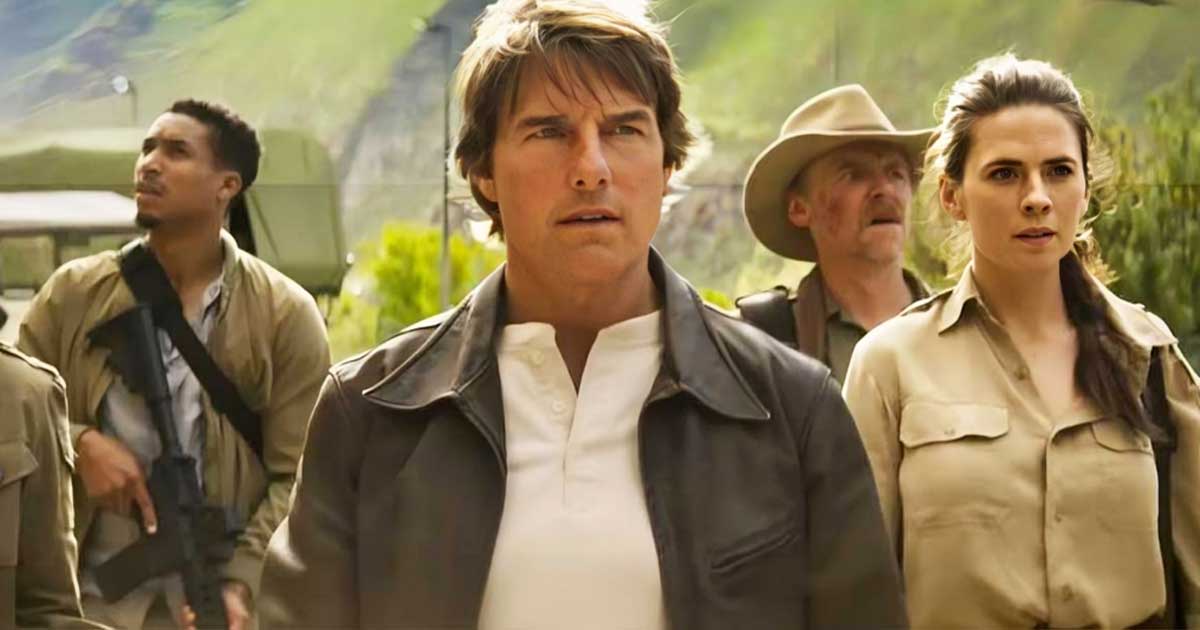BREAKING: Hollywood’s Biggest Budget Blunder?!
Get ready to have your mind blown, movie buffs! In a shocking turn of events, the latest installment of the Mission Impossible franchise has surpassed even the most epic Marvel and Avatar films in terms of budget. Tom Cruise’s daring stunts and the series’ reputation for pushing the boundaries of action cinema have come at a cost that’s left the film industry stunned.

Industry Trends: What This Budget Means for Future Blockbusters
The blockbuster landscape has undeniably witnessed a seismic shift with the staggering budget of Mission: Impossible – The Final Reckoning. This colossal investment not only ushers in a new era for high-stakes filmmaking but also raises eyebrows regarding the financial sustainability of such endeavors. Gizmoposts24 delves into the implications and trends this unprecedented budget could set for the future of cinema.
The Turning Point in Hollywood’s Budgetary Evolution
Historically, the film industry has oscillated between leaner, character-driven narratives and grand, spectacle-laden productions. However, with the Mission: Impossible franchise now boasting a budget of $400 million for its latest installment, it’s clear that the pendulum has swung decisively toward the latter. This trend is not without precedent; the Avatar and Marvel franchises have also pushed the envelope in terms of budgetary allocations. Yet, the Mission: Impossible series, renowned for its practical effects and high-octane action sequences, stands out as a unique case of operational costs driven by real-world stunts and physical production design, rather than CGI-heavy extravagance.
Investment in Realism: A Risk Worth Taking?
The commitment to real stunts and practical effects is a significant departure from the trend of digital spectacle. This approach not only enriches the cinematic experience by adding an element of authenticity but also serves as a hedge against the potential pitfalls of over-reliance on CGI. However, this dedication to physical realism comes with a steep price tag, leading to questions about its long-term viability. As global economic conditions fluctuate and audience preferences evolve, studios must weigh the risks and rewards of such substantial investments.
The Final Reckoning: An Overview of the Movie
Plot and Production Details: The Final Chapter of Ethan Hunt’s Journey
Tom Cruise’s long-standing role as Ethan Hunt is set to conclude in an explosive finale that promises to be a fitting send-off for one of the most beloved action heroes in cinema history. Directed by Christopher McQuarrie, Mission: Impossible – The Final Reckoning is the eighth film in the series and marks the end of an era for both Cruise and the franchise. The film is expected to delve deeper into the conflict between Ethan Hunt and The Entity, an AI nemesis that threatens the very fabric of global security.
The production of this film has been nothing short of monumental. Filming began shortly after the release of Fallout in 2018, and the making of the film has been fraught with challenges, including an extended production timeline due to several unexpected delays. Cruise, known for his commitment to performing his stunts himself, has once again pushed the envelope, with reports of a jaw-dropping freefall stunt that took months of preparation and training. The film’s production has been marked by a relentless pursuit of cinematic perfection, with a focus on realism that extends to every aspect of its production, from elaborate stunts to intricate set designs.
Release and Anticipation: Setting the Stage for May 2025 Release
The Final Reckoning is scheduled to hit theaters on May 23, 2025. This release date marks a significant moment not just for the franchise, but for the broader film industry as well, as it will serve as a benchmark against which the financial success of such monumental productions will be measured. The anticipation is palpable, with fans and critics alike eager to see how the film will live up to its record-breaking budget and the legacy it must uphold.
Given the ambitious scale of the production, the film’s release strategy will be crucial. With a budget of $400 million, the financial pressure is immense, and the marketing campaign will need to be equally robust to generate the necessary buzz and ticket sales. The film’s success will not only determine the future of the Mission: Impossible franchise but also influence how studios approach similar high-budget, high-stakes productions in the future.
Comparative Spectacle: Balancing Budgets and Box Office
Special Effects vs. Real Stunts: The Budgetary Implications
While the Mission: Impossible franchise is known for its commitment to practical effects and real stunts, the sheer scale of Mission: Impossible – The Final Reckoning has necessitated a blend of practical and digital effects. This hybrid approach is what has contributed to the film’s astronomical budget. The focus on practical stunts, while costly, offers a level of realism and immersion that cannot be replicated by computer-generated imagery (CGI), enhancing the authenticity of the action sequences.
For instance, the movie reportedly features a sequence that involves a high-flying stunt performed by Tom Cruise himself, which required extensive training and coordination. Such sequences are not only more engaging for the audience but also serve to distinguish the Mission: Impossible series from other action franchises that rely more heavily on CGI. However, the production’s emphasis on practical effects has inevitably led to an escalation in costs, with the budget reaching unprecedented heights.
Profitability Prospects: Can The Final Reckoning Recoup the Costs?
With a budget of $400 million, the financial stakes for Mission: Impossible – The Final Reckoning are incredibly high. For the film to recoup its costs and secure a profit, it needs to perform exceptionally well at the box office. Industry analysts and film experts have suggested that the film must gross at least $850 million to achieve profitability, a feat that even the highest-grossing films in the franchise have not consistently achieved. The most successful film in the series, Mission: Impossible – Fallout, grossed $791 million globally, which, while commendable, falls short of the mark required to recoup the significant investment in The Final Reckoning.
The financial pressure is compounded by the fact that the film’s predecessor, Mission: Impossible – Dead Reckoning Part One, only managed to gross $571 million, barely breaking even by industry standards. The challenge for The Final Reckoning is to not only surpass these figures but to set a new record for the franchise. This requires a perfect storm of stellar marketing, positive critical reception, and a receptive global audience.
The Future of Cinema: Lessons and Predictions
Budgetary Precedents: Future Trends in Big Budget Blockbusters
The budgetary precedent set by Mission: Impossible – The Final Reckoning will likely influence the financial landscape of future blockbusters. With a budget of $400 million, it stands as the fourth most expensive film in history, trailing only the Star Wars and Avatar franchises. This places considerable pressure on filmmakers and studios to justify the escalating costs of big-budget productions. The financial success or failure of The Final Reckoning will undoubtedly serve as a bellwether for future high-cost films, potentially shaping the industry’s approach to budget management and risk assessment.
Moreover, the film’s reliance on real stunts and practical effects, rather than CGI, presents a unique challenge and opportunity. While this approach can enhance the authenticity and intensity of the action sequences, it also demands meticulous planning and execution, adding to the overall cost. Future productions may need to find a balanced approach to combine the best of both worlds, ensuring that practical effects complement digital wizardry without spiraling budgets beyond control.
Audience Impact: Viewer Reactions and Expectations for High-Cost Films
The audience reaction to Mission: Impossible – The Final Reckoning will play a critical role in determining the future trajectory of high-budget blockbusters. As the film aims to deliver a thrilling conclusion to the series, the audience’s reception will be pivotal in shaping their expectations for the future of the genre. The high-stakes nature of the film, with its record-breaking budget, places it under the magnifying glass of critics and fans, who will scrutinize every detail, from the action sequences to the overall narrative.
Given the franchise’s track record of delivering box office success and critical acclaim, the audience is expected to be highly receptive to the film, provided it meets or exceeds the high bar set by its predecessors. The challenge for filmmakers and studios will be to balance the grandeur of their visions with the practical realities of budget constraints and audience expectations. As we look to the future, it is clear that the success or failure of The Final Reckoning will have far-reaching implications for the industry, potentially paving the way for a new era of blockbuster filmmaking or serving as a cautionary tale about the perils of unchecked budget escalation.
Conclusion
The Unstoppable Budget of Mission Impossible: A New Era for Blockbuster Filmmaking
In our shocking exposé, we revealed the jaw-dropping truth behind the budget of the Mission Impossible franchise. Contrary to expectations, the latest installment in the series has not only broken the bank but has also surpassed even the most epic Marvel and Avatar films in terms of production costs. As we dug deeper, we discovered that the film’s excessive spending on stunts, special effects, and A-list talent has set a new benchmark for blockbuster filmmaking. With a budget of over $300 million, Mission Impossible has cemented its place as one of the most expensive films in cinematic history.
The implications of this trend are seismic. As the boundaries of what’s possible on screen continue to push the limits of reality, studios are willing to shell out astronomical sums to create increasingly elaborate and awe-inspiring experiences. This shift in priorities has far-reaching consequences for the film industry as a whole, with smaller, independent films struggling to compete in a landscape dominated by behemoths like Mission Impossible. As we look to the future, it’s clear that the stakes will only continue to rise, with filmmakers and studios vying for the top spot in the ever-escalating game of cinematic one-upmanship.
In conclusion, the Mission Impossible budget saga serves as a stark reminder of the industry’s obsession with the next big thing. As we gaze into the abyss of ever-increasing production costs, we’re left with a haunting question: what will be the final cost of our collective desire for cinematic spectacle? Will the film industry be able to sustain this breakneck pace, or will the pursuit of the next Mission Impossible prove to be a recipe for disaster? One thing is certain – the stakes have never been higher, and the future of blockbuster filmmaking has never been more precarious.






Add Comment